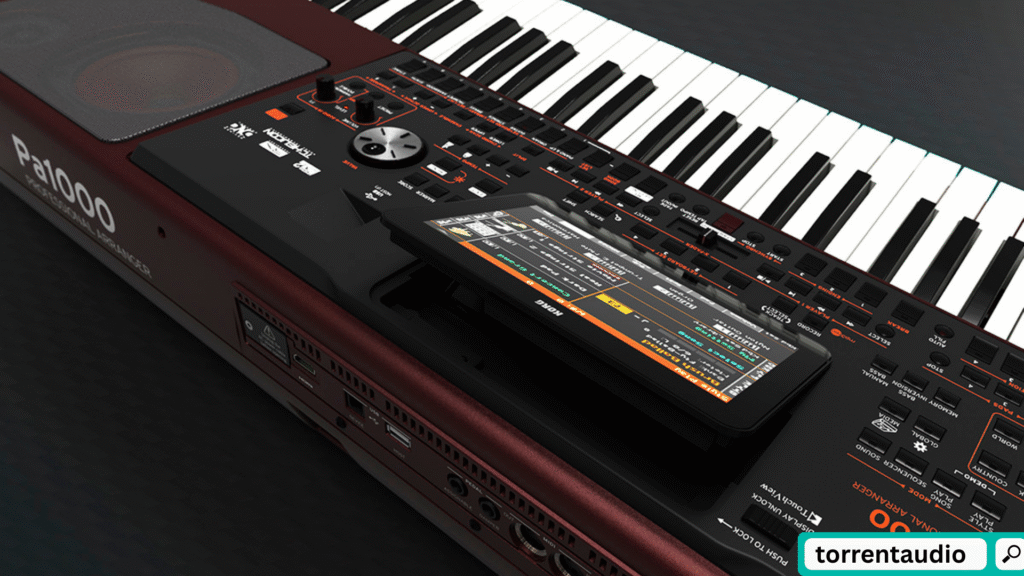KORG has long been recognized as a pioneer in the realm of music technology thanks to its cutting-edge synthesizers, digital pianos, and music production equipment. Since its constituting in 1962, the firm has continuously hurried the boundaries of sound design. producing tool that blends cutting-edge technologies with rich tonal character. KORG equipment, renowned for its exceptional sound quality and precise engineering, is today a vital component of home music setups, live performances, and studios worldwide. Through their classic analog cordial or their inventive digital synthesis, KORG instruments have consistently served as models for performers in a variety of fashion. In 2025, KORG’s latest innovations continue this tradition by offering enhanced performance, intuitive controls, and cutting-edge connectivity to meet the demands of contemporary musicians.
Feature Highlights:
- Genuine Sound Engines: KORG instruments have state-of-the-art sound engines that remarkably realistically and deeply recreate both contemporary and traditional tones. The sound quality is unrivaled among sample-based summation and analog impersonation.
- Easy-to-use Interface KORG interfaces are user-friendly, with simplified menus, high-resolution screens, and adjustable controls for a quicker workflow, and they are made for artists of all skill levels.
- Large Presets and Libraries: Every KORG instrument features a comprehensive preset library that encompasses a diverse range of sounds, from experimental synth soundscapes to acoustic pianos and symphonic instruments.
- High-quality construction, KORG products are made to endure the demands of studio and touring use. They have high-quality components, sturdy materials, and dependable keybeds for enduring performance.
- Advanced Connectivity: DAWs, external devices, and live performance setups may all be seamlessly integrated with the modern KORG exemplar thanks to their USB, MIDI, and audio interface capabilities.
- Performance controllers: For expressive playing and in-the-moment sound sculpting, a number of KORG instruments come furnished with assignable knobs, touch strips, modulation control, and pitch bend wheels.
What’s New 2025:
Several intriguing changes are included in the 2025 KORG lineup to improve performance and creativity:
- AI-provided Sound Design: Based on the user’s playing style, the new AI-helped engine makes guidance for chord progressions, good settings, and sound variants while maintaining manual control.
- Improved Polyphony and manufacturing Power: The new models offer more simultaneous voices, deeper layering, and intricate effects without sacrificing quality, thanks to their larger processing capability.
- Intensified Sound Library: Hundreds of more presets, such as hybrid operatic soundscapes, cinematic pads, and contemporary EDM-ready sounds, are included in the 2025 edition.
- Broadcasting MIDI and Audio: linking to tablets, mobile phones, and moving speakers is now easier than ever, thanks to the built-in Bluetooth MIDI and audio sender.
- Customizable Interface Layouts: Users may now preserve customized control settings for various projects, generate performance views, and completely change menu layouts.
- Better touch panel Experience: Touch screens with higher resolution and quicker reaction times allow for more accurate and seamless navigation.
Quick Guide:
Even for novices, learning to play a KORG instrument is simple:
- Turn on and begin the initial setup by plugging in the power source or, if compatible, using batteries. For sound output, connect speakers or an earpiece.
- Choose a Sound or Preset: From the various sound banks, select one using the touchscreen or navigation controls.
- Adjust Parameters: Use unique knobs, sliders, or menu choices to change the performance parameters, effects, and tone.
- Record or Perform: You may record via MIDI or USB to a DAW, play live, or utilize the built-in sequencer.
- Save Your Settings: Keep your performance configurations and sounds in memory for quick access at a later time.
- Explore and Experiment: For unusual effects, try adding real-time effects, layering sounds, and employing arpeggiators.
System Qualification:
Depending on the particular KORG model and whether it is software-integrated or hardware-based, different system requirements apply:
Regarding Hardware Instruments:
- Power source: supplied AC adapter or, if necessary, battery
- External audio output options include balanced XLR or 1/4-inch sound system connectors, depending on the model.
- Noontime: Support for USB-MIDI or standard 5-pin DIN
- Headphones or speakers for observation
Regarding Plugin and Software Integration:
- Running System: macOS 11 and above or Windows 10/11 (64-bit)
- Central unit: Quad-core recommended; Intel Core i5 or comparable
- Random access memory: 8 GB at the very least (16 GB is advised for big sample libraries).
- Computer memory: A minimum of 5 GB of unoccupied installation space
- Audio linkage: Core Audio for Mac or ASIO-compatible for Windows
Download Steps:
- Microcode updates or Software-Based KORG agency: Follow these steps to download firmware updates or software-based KORG instruments:
- Choose the Correct Version: Make sure the file you download is compatible with your running system.
- Download the Installer or Update chart: Click the link and save the file to your computer.
- Run the deployment: Follow the on-screen instructions to install the software or update firmware.
- Activate Your Product: Use the consecutive number that came with your gain to register and unlock all features. Restart and Enjoy: After the computer science has been installed, launch your KORG software or utilize the updated hardware features.


